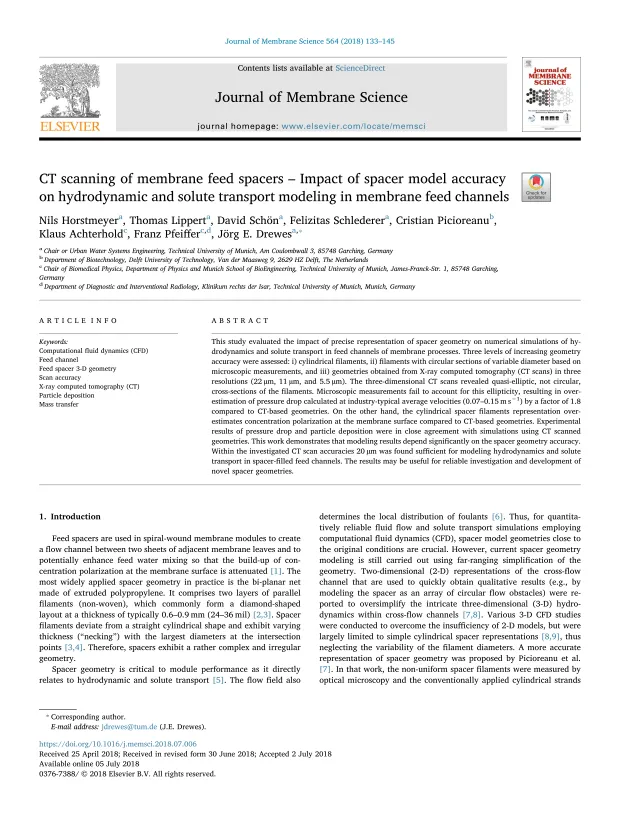This study evaluated the impact of precise representation of spacer geometry on numerical simulations of hydrodynamics and solute transport in feed channels of membrane processes. Three levels of increasing geometry accuracy were assessed: i) cylindrical filaments, ii) filaments with circular sections of variable diameter based on microscopic measurements, and iii) geometries obtained from X-ray computed tomography (CT scans) in three resolutions (22 µm, 11 µm, and 5.5 µm). The three-dimensional CT scans revealed quasi-elliptic, not circular, cross-sections of the filaments. Microscopic measurements fail to account for this ellipticity, resulting in overestimation of pressure drop calculated at industry-typical average velocities (0.07–0.15 m s-1) by a factor of 1.8 compared to CT-based geometries. On the other hand, the cylindrical spacer filaments representation overestimates concentration polarization at the membrane surface compared to CT-based geometries. Experimental results of pressure drop and particle deposition were in close agreement with simulations using CT scanned geometries. This work demonstrates that modeling results depend significantly on the spacer geometry accuracy. Within the investigated CT scan accuracies 20 µm was found sufficient for modeling hydrodynamics and solute transport in spacer-filled feed channels. The results may be useful for reliable investigation and development of novel spacer geometries.
